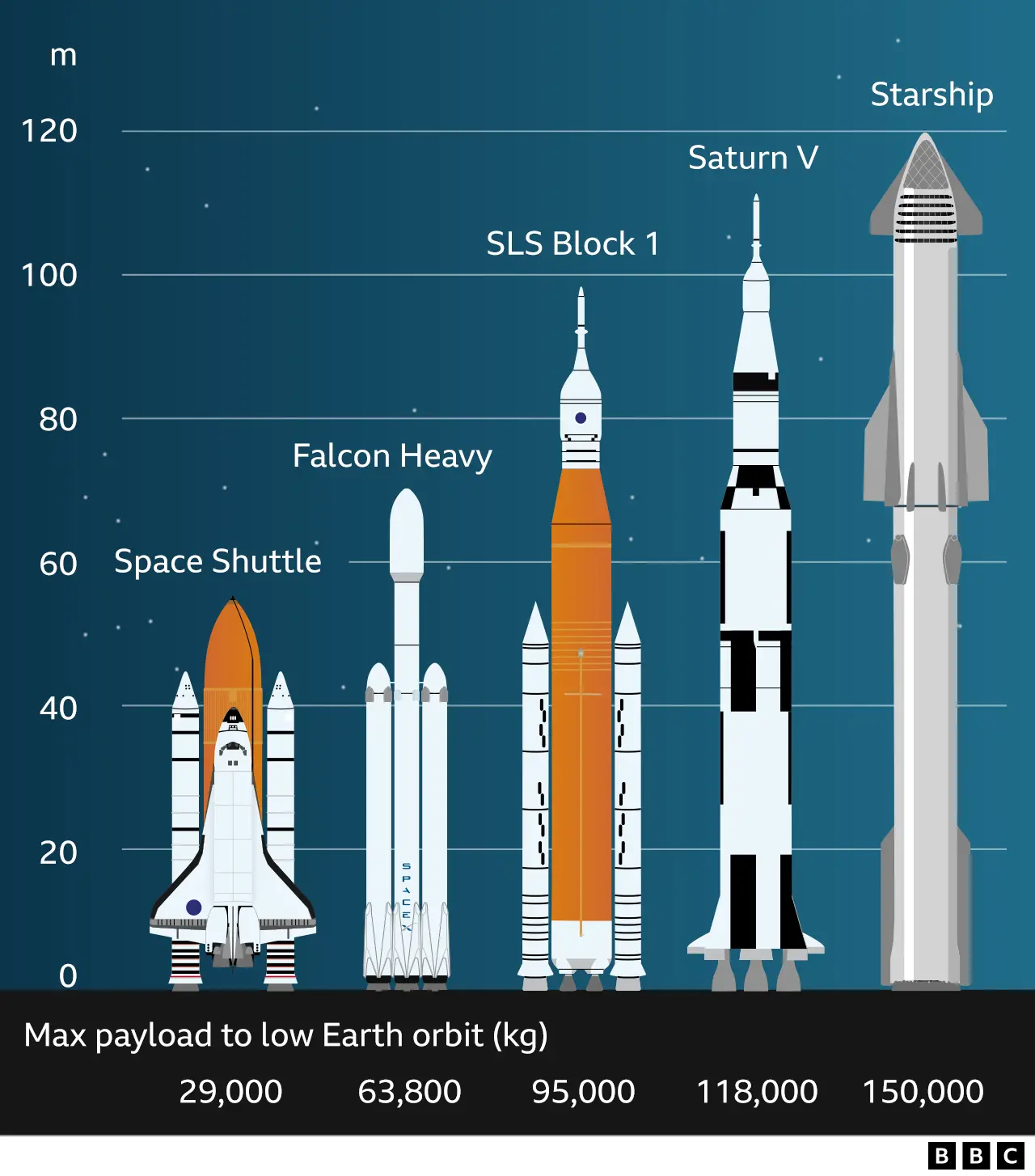Earth To Earth Rocketry + Hyperloop: Earth Before Mars
— Kekius Maximus (@elonmusk) May 21, 2025
- Historical Context (Pre-SpaceX, Space Shuttle Era):
- NASA Space Shuttle (1981–2011): The cost to launch a payload to LEO was approximately $54,500 per kg, based on an average launch cost of $1.5 billion for a 27,500 kg payload.
- This high cost was due to the shuttle's complex design, limited reusability (only solid rocket boosters and the orbiter were reused, with high refurbishment costs), and low launch cadence.
- Falcon 9 (2010–Present):
- Initial Cost (2010–2015): Early Falcon 9 launches cost around $62 million for a 22,800 kg payload to LEO, equating to approximately $2,720 per kg. This represented a ~20-fold reduction compared to the Space Shuttle ($54,500/kg ÷ $2,720/kg ≈ 20).
- Post-Reusability (2015–2025): With the introduction of reusable first-stage boosters (first successful landing in December 2015), costs dropped further. By 2022, Falcon 9 launches were priced at $67 million (adjusted for inflation), with some estimates suggesting internal costs as low as $28 million per launch for Starlink missions, translating to ~$1,600–$2,000 per kg for a reusable Falcon 9 with a 16,250–22,800 kg payload.
- Reduction Ratio: Compared to the Space Shuttle, Falcon 9 reduced costs by a factor of ~27–34 ($54,500 ÷ $1,600–$2,000). Compared to early Falcon 9, reusability lowered costs by ~1.4–1.7 times ($2,720 ÷ $1,600–$2,000).
- Falcon Heavy (2018–Present):
- Cost and Capacity: Falcon Heavy, with a payload capacity of up to 63,800 kg to LEO, has a list price of ~$90 million, equating to ~$1,400 per kg.
- Reduction Ratio: Compared to the Space Shuttle, Falcon Heavy reduced costs by ~39 times ($54,500 ÷ $1,400). Compared to early Falcon 9, the cost per kg dropped by ~1.9 times ($2,720 ÷ $1,400).
- Starship (Projected, 2025–Future):
- Current Estimates (2025): Starship, with a reusable payload capacity of 100–150 tons (100,000–150,000 kg) to LEO, is estimated to have a build cost of ~$90 million, with SpaceX likely charging customers ~$180 million initially. For a 150-ton payload, this yields ~$1,200 per kg for single-use launches. With partial reusability (6 flights), costs could drop to $78–$94 per kg, and with high reusability (20–70 flights), projections suggest $13–$32 per kg.
- Aspirational Goals: Elon Musk has stated that Starship’s marginal cost could be as low as $1 million for >100 tons, potentially achieving $10–$20 per kg with full reusability and high launch cadence.
- Reduction Ratio:
- Compared to the Space Shuttle: ~580–4,200 times ($54,500 ÷ $94–$13) with partial to high reusability.
- Compared to Falcon Heavy: ~15–108 times ($1,400 ÷ $94–$13).
- Compared to early Falcon 9: ~29–209 times ($2,720 ÷ $94–$13).
- In the best-case scenario ($10/kg), Starship could achieve a ~5,450-fold reduction compared to the Space Shuttle ($54,500 ÷ $10).
Rocket/System | Year Introduced | Cost per kg (LEO) | Reduction Ratio vs. Space Shuttle | Reduction Ratio vs. Early Falcon 9 |
|---|---|---|---|---|
Space Shuttle | 1981 | $54,500 | - | - |
Falcon 9 (Early) | 2010 | $2,720 | ~20x | - |
Falcon 9 (Reusable) | 2015–2025 | $1,600–$2,000 | ~27–34x | ~1.4–1.7x |
Falcon Heavy | 2018 | $1,400 | ~39x | ~1.9x |
Starship (Initial) | 2025 (est.) | $1,200 | ~45x | ~2.3x |
Starship (6 flights) | 2025–2026 (est.) | $78–$94 | ~580–700x | ~29–35x |
Starship (20–70 flights) | 2027–2028 (est.) | $13–$32 | ~1,700–4,200x | ~85–209x |
Starship (Aspirational) | Future | $10–$20 | ~2,725–5,450x | ~136–272x |
- Reusability:
- Falcon 9’s reusable first stage (up to 28 flights as of 2025) significantly lowered costs by amortizing the booster’s cost (~70% of the rocket).
- Falcon Heavy leverages three reusable Falcon 9 cores, further spreading costs over larger payloads.
- Starship aims for full reusability (both upper and lower stages), with projections of 20–100 flights per vehicle, drastically reducing per-flight costs.
- Increased Payload Capacity:
- Larger rockets like Falcon Heavy (63,800 kg) and Starship (100,000–150,000 kg) spread fixed costs over more payload mass, reducing cost per kg.
- Starship’s massive capacity allows for economies of scale, especially for megaconstellations like Starlink.
- Simplified Design and Manufacturing:
- SpaceX’s use of Merlin engines (Falcon 9/Heavy) and Raptor engines (Starship) with streamlined production (e.g., 4,000 Raptor engines per year) lowers costs.
- Falcon 9’s iterative design improvements (e.g., Octaweb engine layout, aluminum-lithium tanks) enhanced efficiency.
- Starship’s stainless steel construction reduces material and fabrication costs compared to traditional aerospace materials.
- High Launch Cadence:
- SpaceX’s high launch frequency (91 Falcon 9 launches in 2023, ~150 projected for 2025) spreads fixed infrastructure costs (e.g., launch pads, staff) across more missions.
- Starship’s potential for frequent launches could further drive down costs.
- Private Sector Efficiency:
- Unlike NASA’s bespoke, government-funded programs (e.g., Space Shuttle, SLS), SpaceX’s commercial approach minimizes cost overruns. Falcon 9’s development cost was $390 million, compared to NASA’s estimate of $4 billion for a similar rocket.
- SpaceX’s platform-based strategy (iterative improvements across Falcon 9, Heavy, and Starship) outperforms NASA’s one-off designs.
- 1960s–1980s: Costs ranged from $100,000/kg (early NASA) to $5,400/kg (Saturn V).
- 1980s–2011: Space Shuttle stabilized at ~$54,500/kg due to limited reusability and high maintenance.
- 2010–2015: Falcon 9 reduced costs to $2,720/kg, a ~20x drop from the Shuttle.
- 2015–2022: Reusable Falcon 9 and Falcon Heavy further lowered costs to $1,400–$2,000/kg, a ~27–39x reduction from the Shuttle.
- 2025–Future (Starship): Projections suggest $78–$94/kg with partial reusability (2025–2026), potentially reaching $10–$20/kg by 2027–2040, a 580–5,450x reduction from the Shuttle.
- Data Variability: Cost estimates vary due to differences in reported prices (sticker price vs. internal costs), payload capacities (expendable vs. reusable), and inflation adjustments.
- Starship Projections: Starship’s costs are speculative as it is not yet fully operational. Actual costs depend on achieving reliable reusability and high launch cadence.
- Market Dynamics: SpaceX’s pricing may not fully reflect cost savings due to market demand and profit margins. For example, Falcon 9’s $6,000/kg for small payloads in rideshare missions is higher than the advertised $2,720/kg.
- External Factors: Competitors like Rocket Lab ($10,000–$20,000/kg) and government programs (e.g., China’s Long March, ~$4,000/kg) provide context, but SpaceX remains the cost leader.
- Falcon 9: ~20–34x reduction vs. Space Shuttle ($2,720–$1,600/kg vs. $54,500/kg).
- Falcon Heavy: ~39x reduction ($1,400/kg).
- Starship: Potentially 580–5,450x reduction ($94–$10/kg, projected).
Earth To Earth Rocketry + Hyperloop: Earth Before Mars





